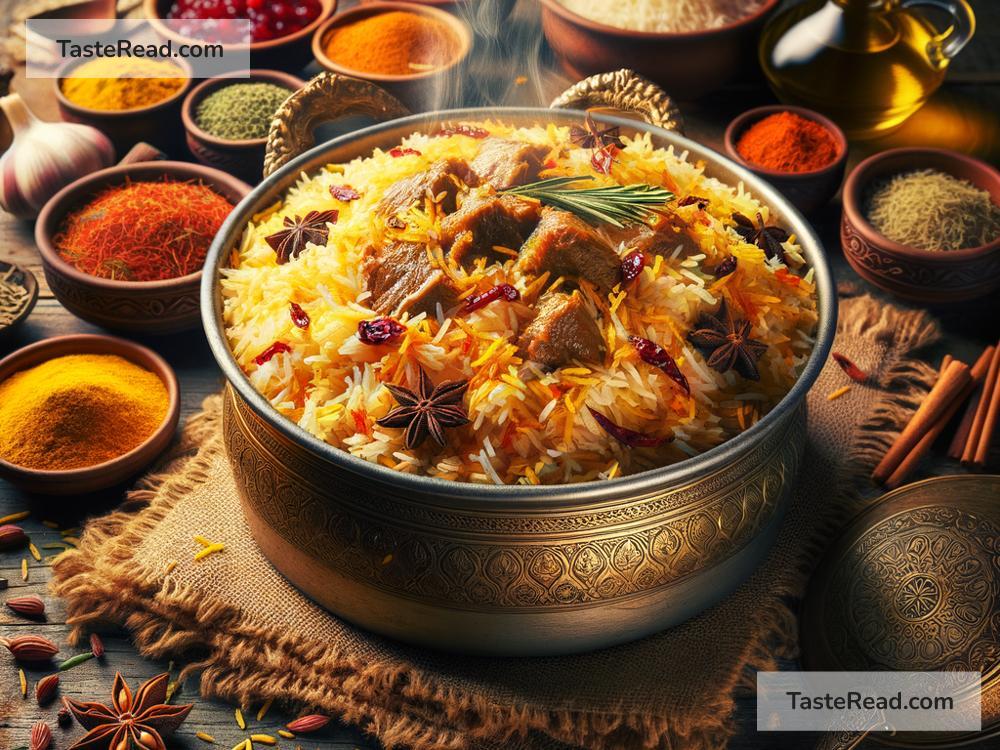Exploring the History of the Indian Biryani: A Journey Through Time
Imagine a dish so enticing that it whispers tales of ancient kings, vibrant cultures, and culinary magic in every bite. That’s the Indian Biryani for you – a dish that’s not just food, but a celebration on your plate. Let’s embark on an exciting journey through time to uncover the fascinating history of this beloved dish.
Biryani, at its heart, is a delicious medley of rice, spices, and meat (or vegetables for those who prefer), cooked together to perfection. It’s a dish that carries the legacy of centuries, evolving through the ages, yet remaining unfailingly irresistible. The history of Biryani is as captivating as its flavors, intertwined with tales of migration, adaptation, and fusion.
The Origins: A Culinary Adventure Begins
The story of Biryani begins many centuries ago, and while its exact origin remains a deliciously disputed subject, most culinary historians agree that it likely originated in Persia. The word “Biryani” itself is believed to be derived from the Persian word “birian,” which means “fried before cooking,” referring to the method of preparing the rice.
As traders and travelers journeyed across continents, they brought with them their culinary traditions, spices, and recipes. It was during these travels that Biryani made its way to the Indian subcontinent, where it was warmly embraced and began its transformation into the delectable version we love today.
The Mughal Influence: Biryani’s Royal Patronage
The rich history of Biryani in India is often associated with the Mughal Empire. The Mughals, known for their opulence and love for grand feasts, played a pivotal role in popularizing Biryani. It is said that the Mughal emperors had a penchant for lavish dishes, and Biryani, with its complex flavors and regal appearance, fit the bill perfectly.
Under the patronage of the Mughals, Biryani evolved into a sophisticated dish with refined flavors, fit for royalty. The royal chefs experimented with various ingredients, blending local spices and cooking techniques with their Persian influences, giving Biryani a unique identity that reflected the cultural amalgamation of the time.
A Dish for the People: The Evolution of Regional Varieties
As Biryani continued to spread across the Indian subcontinent, it found a home in various regions, each adding its own twist to the recipe. This led to the birth of numerous regional varieties of Biryani, each with its own unique flavor profile.
In the southern city of Hyderabad, the Hyderabadi Biryani became famous for its rich and tangy taste, a result of marinating the meat in yogurt and spices before cooking. Meanwhile, in the eastern regions, the Kolkata Biryani charmed palates with its subtle flavors and inclusion of potatoes.
Down south, the coastal areas introduced seafood into Biryani, giving rise to varieties like the Malabar Biryani, renowned for its layers of fish or shrimp and aromatic rice. The north of India, particularly Lucknow, became known for its delicate Awadhi Biryani, where the meat and rice are partially cooked separately before being layered and cooked together under a slow fire (Dum style).
A Culinary Masterpiece Cherished Across Borders
Today, Biryani is not just a dish cherished in India but has won hearts across the world. It’s a culinary masterpiece that transcends borders, bringing people together over shared plates and stories. The essence of Biryani lies in its ability to adapt while retaining its soul, a testament to its enduring appeal.
In every spoonful of Biryani, you taste more than just the spices and ingredients. You experience centuries of history, the mingling of cultures, and the artistry of countless unnamed cooks who have contributed to its legacy. It’s a dish that invites you to explore its depths, to relish not just the flavors, but the rich tapestry of stories woven into its creation.
Conclusion
The story of Biryani is a captivating journey through time, a culinary adventure that spans continents and epochs. From its humble beginnings to its regal patronage under the Mughals, and its eventual proliferation across the Indian subcontinent, Biryani has remained a symbol of cultural unity and gastronomic delight. It embodies the essence of Indian cuisine – diverse, vibrant, and endlessly enchanting. Whether it’s a lavish feast or a simple meal shared with loved ones, Biryani remains a dish that brings joy, reminding us of the rich tapestry of history and flavors that India has to offer. So, the next time you indulge in a plate of Biryani, remember, you’re not just eating a dish, you’re savoring a piece of history.


